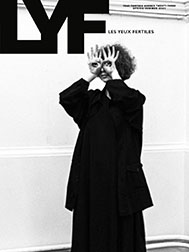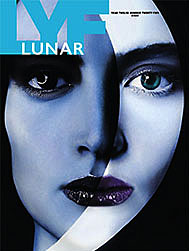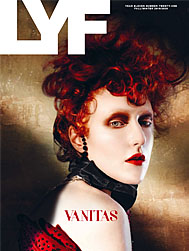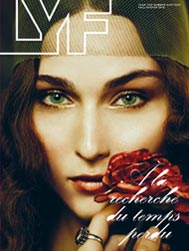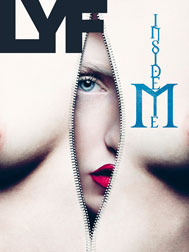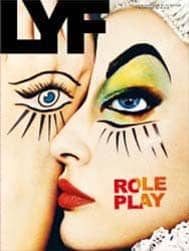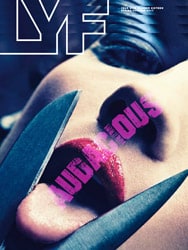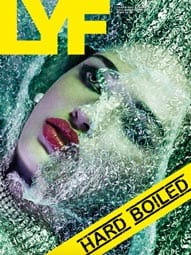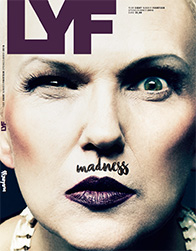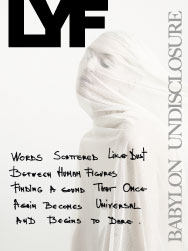How did the Blake Kuwahara project come about and what motivated you to create your own collection?
I was having dinner with a friend of mine who is a fashion photographer, and she was lamenting that she couldn’t find any frames that suited her style and aesthetic. She felt frames were either “boringly preppy” or “too directional”. She wanted a pair that spoke to both aspects of her personality – the creative as well as the more classical business side. Her desires were the same as many of my friends that are in creative fields: architects, graphic designers, fashion designers. While they all have an expressive, artistic side to what they do, they are also business people at heart and also need to be taken seriously. So I felt that there was a void
in the market for frames that were artful as well as wearable, and selfishly wanted to fill that with a collection that my friends and I related to and wanted to wear.
I wanted the collection to speak both design languages: classical and modern. Bilingual so to speak! The inside silhouettes have a more familiar bent. The outer silhouettes are more forward but are also generally translucent so, from a distance, you really only see the inner frame. As you get closer, the outer frame becomes more apparent and creates a whole new look and attitude.
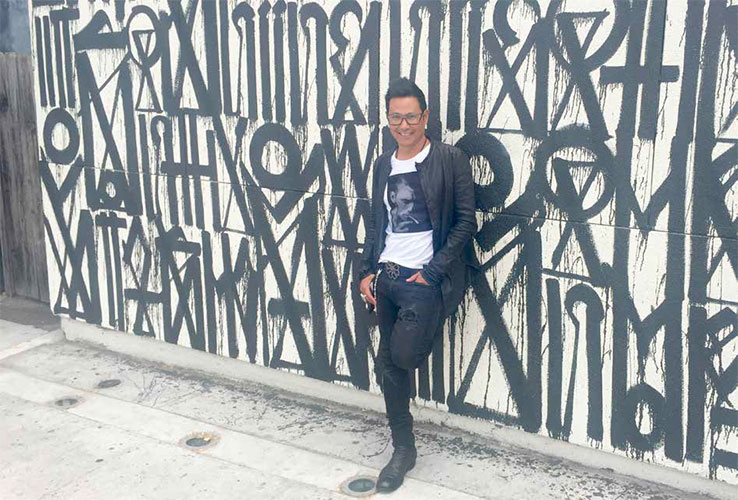
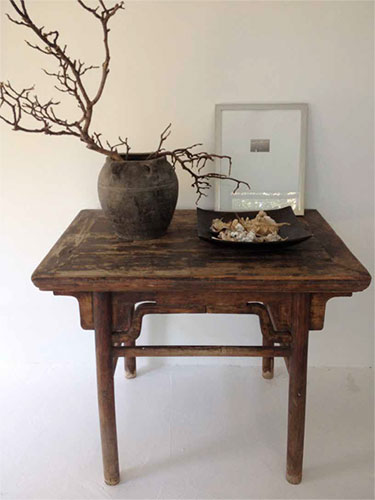
Your frames are the embodiment of originality, quality, design and modernity within tradition; how do you manage to bring all these elements together?
For me, it’s not just about how a frame looks, but how it is executed and how it feels in the hand. The “feel” of the frame is just as important to me as how it “looks”. So, in designing this collection, I wanted to make sure that there was a tactile sensibility; that from the time you have the frame in your hand, you can feel the difference and craftsmanship. That nuancing is created by adding extra cutting and sculpting to the frame, particularly on the temples, which is where people come in contact with it. I call them “touch points”. I also wanted the frames to have very clean and modern lines. One way of creating that was to mitre the end pieces at 45 degrees so that the break in the end piece is hidden in the corner. This leaves a clean, solid line without any interruptions. It’s a technique which is used in architecture and furniture design, but is very difficult to make because everything has to be cut precisely and at exactly the right angles.
Because of the way the two frames are combined together, the inner silhouette being more traditional and the outer shape being more forward, the combination makes it very unexpected and modern. I also like to create design tension through the use of color. The outer acetates are generally more monotone and translucent while the inner acetates are generally made out of block material so the structure is much more complex
and nuanced.
Your collection is surprising! How did you come up with the idea of inserting a silhouette inside another, creating contrasting shapes, lines and colors?
I came across a wonderful stool that was created out of a block of crystal Lucite but inside was an antique wooden Chinese stool. I thought this was brilliant.
It took something old and familiar, but by encapsulating it in a modern block of plastic, it became completely new. It took something out of its normal context and made it both familiar and fresh at the same time. The challenge then became one of engineering and figuring out a way to laminate two frames together without any seams or bubbles. Plus, different acetates have different shrinkage rates and some colors bleed more than others so there was a lot of trial and error before the technique was perfected. It takes more than 2 months for just the lamination process to ensure that it is perfectly cured and that there is a seamless connection between the two frames. It then goes through the milling process with a lot of hand work so it’s very labor intensive.
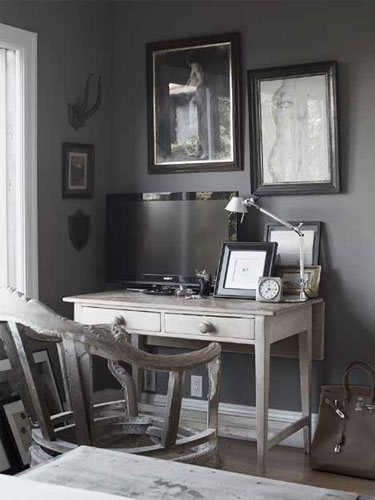
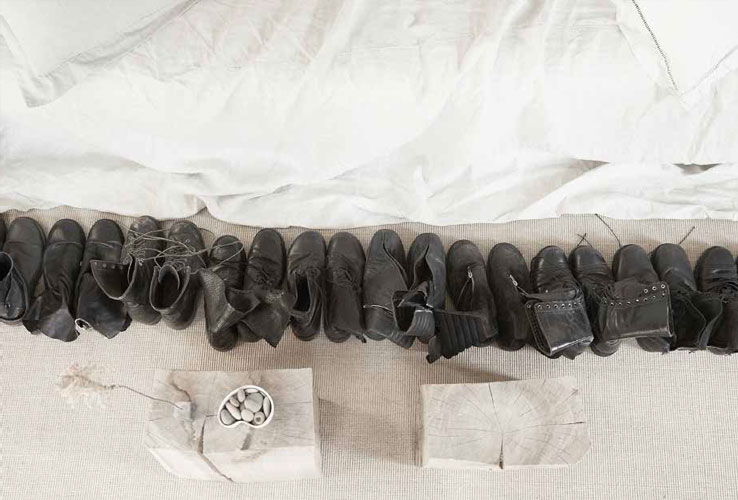
We know that you are a cultured man, an aesthete, and you are always attentive to fashion and on the lookout for creative trends. What are your past and current sources of inspiration?
I’m a shopper and have my favorite stores that I like to visit all over the world. What they have in common is that the owners are also the buyers so they curate their stores with a very keen eye with a specific point of view. That in itself is inspirational, and it’s an important reminder for me as a designer. It’s critical when creating an eyewear collection: to stay focused and true to your vision. It’s also important for me to keep an
eye on what’s going on in fashion since eyewear is after all a fashion accessory. Some of these retailers like Hotoveli in New York, H. Lorenzo in LA and The Archive in San Francisco have also become my customers and carry my sunglass range which is both very humbling but also keeps me inspired.
But inspiration can come from many places – architecture, furniture design, interior design. It’s all related to what we do as eyewear designers.
We’re all influenced by the things around us.
For me, trolling flea markets is really my biggest source of inspiration. I love the character and soul of a well-worn and well-loved object and try to bring that essence to my collection through color and texture. I’ve also been known to find odd objects like a screw driver or spoon and duplicate a curve in the line of a temple for instance.
See the LYF hard copy for the full interview.
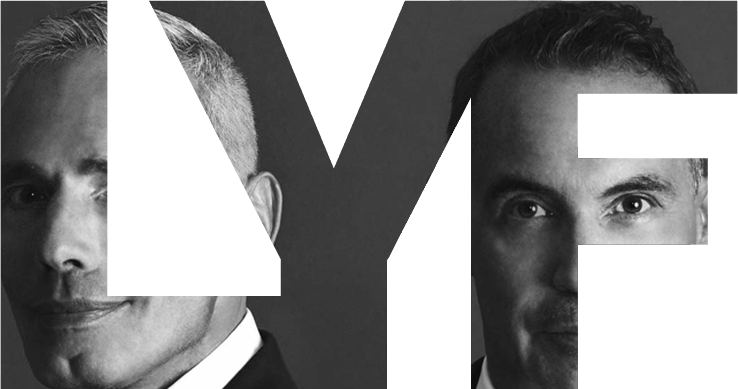
Christian ROTH
Eric DOMEGE


